SA’s toxic algal bloom probably driving sharks closer to SA beaches, experts warn for caution
Shocking footage has captured the body of a dead great white shark floating in the shallows of an SA beach – now, officials have revealed test results from two previous deaths.
SA News
Don't miss out on the headlines from SA News. Followed categories will be added to My News.
Shocking footage has shown the body of a deceased great white shark floating in the shallows of a Yorke Peninsula beach, with two others “seen in distress” just metres away.
The video, posted by Shark Watch SA, was taken at 5pm on Thursday at Wattle Point, in Edithburg – highlighting yet another harrowing example of the state’s toxic algal bloom crisis.
On Friday, at Henley Beach just after 4pm, a shark was also spotted “cruising” near the Torrens Outlet.
A Department of Primary Industries and Regions spokesman said they were “continuing to investigate the series of deaths of sharks around the South Australian coastline”.
“A necropsy was performed on the white shark retrieved from Henley Beach on May 5, 2025 but unfortunately, there were no conclusive histological findings to explain what caused its death,” they said.
“Extensive analysis and necropsies were also conducted on two white sharks found by members of the public at Port Willunga and Port Moorowie last month but unfortunately due to the age of the biological samples available a definitive cause of death was unable to be determined.
“The samples of all carcasses collected to date will be used for future scientific studies and help to improve our understanding of the white shark population in South Australia.”
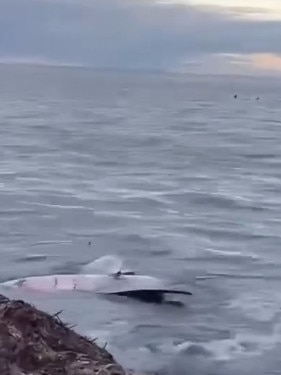

Experts say SA’s algal bloom is likely to blame for an increased presence of sharks closer to South Australian shorelines, as a shark measuring up to 4m was spotted at Sellicks on Friday.
Hackham man Richard Vinall was taken to hospital on Thursday morning with serious injuries after a shark attack beachside of the reef near Port Noarlanga jetty. Locals said it was considered a spot where sharks were not usually seen.
South Australian marine conservation expert Dr Mike Bossley said it was possible the algal bloom could have driven the shark to Port Noarlunga.
“Sharks can swim long, long distances, very quickly,” he said. “It’s not very far from where the algal bloom is known to be, down at the bottom of the Fleurieu.
“It’s possible that it was impacted down there and then swam up.”
He has heard increased reports of sharks and stingrays – both from the same family of marine animals – swimming in shallow water in South Australia, and it was “certainly possible” this was a result of the huge algal bloom.
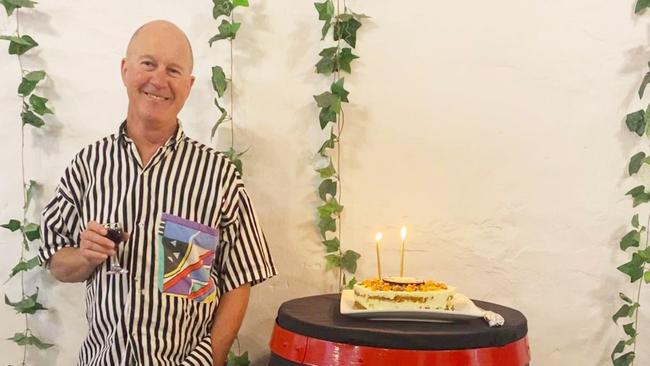
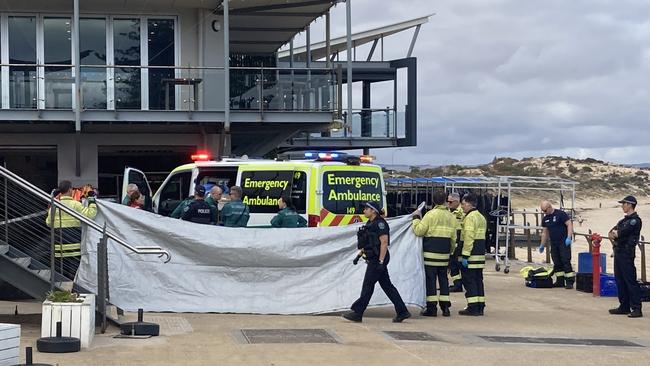
Since February, millions of fish across more than 200 species have died because of the phenomenon, which was described by not-for-profit OzFish SA as a “toxic blanket” smothering marine life.
Mr Bossley said he would “certainly be cautious about going swimming” near places where the algal bloom was known to be, including the bottom of the Fleurieu Peninsula and parts of the Yorke Peninsula, but added he was “not in a position to offer advice”.
“It’s really distressing that it’s going on, and I feel terrible for the poor guy that got bitten at Port Noarlunga,” he said. “I’ve been in there hundreds of times; it’s a very popular spot.”
Estuarine ecologist Faith Coleman said sharks in South Australia were unwell and dying, “most likely as a result of the algal bloom”, while she had multiple theories about why the bloom could be driving sharks closer to the shore.
“The algal bloom is causing damage to the sharks’ gills, and that causes a lack of oxygen,” she said. “Any animal when exposed to a lack of oxygen often gets neurological issues … so that may be one theory.
“They’re tired, they’re not getting a lot of oxygen, they want somewhere to rest, which might be why they’re coming into shore.”
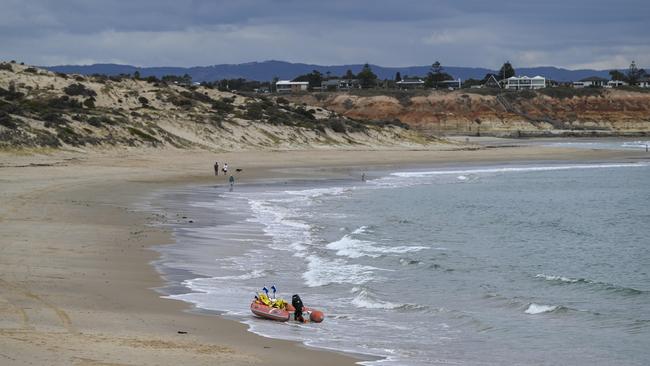
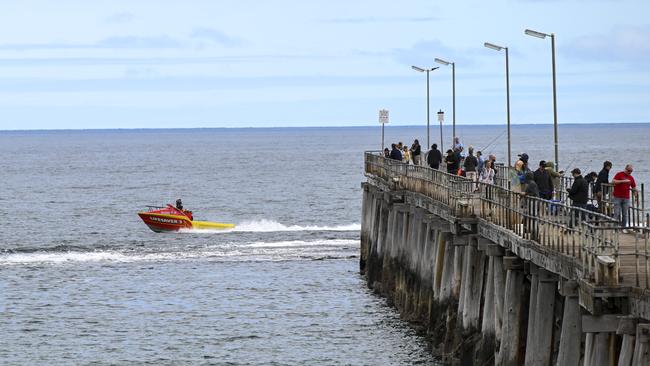
A state government spokeswoman said there was no scientific evidence before the government to indicate the algal bloom might make shark attacks more likely.
On Friday, Shark Watch SA posted to social media a photo of a three-to-four-metre great white shark near the shore at Sellicks Beach on Friday, 25 minutes south of Port Noarlunga.
More Coverage
Originally published as SA’s toxic algal bloom probably driving sharks closer to SA beaches, experts warn for caution




